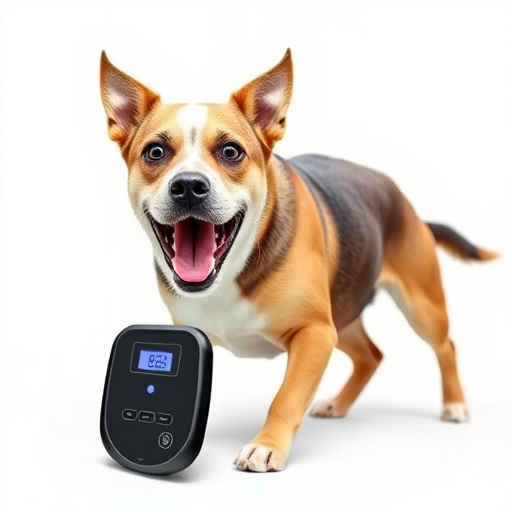Dog ultrasonic behavior modifiers, using sound waves to train pets, require regular attention. Look for low battery signs like weakened signals or blinking lights, and replace batteries promptly with fresh alkaline ones. Regular maintenance, including checks for damage and unusual activation, ensures safety and effectiveness in dog training.
“Explore the world of dog training with an innovative tool—the ultrasonic behavior modifier. This device offers a humane approach to modifying canine behavior by emitting high-frequency sound waves. In this article, we delve into the safety and effectiveness of dog repellents, explaining how they can be used to deter unwanted behaviors like barking or jumping. Additionally, we provide crucial insights on ‘Dog Repellent Low Battery Warning Signs’ and essential maintenance tips to ensure optimal performance.”
- Understanding Dog Repellents and Their Safety
- How Ultrasonic Behavior Modifiers Work
- Low Battery Warning Signs and Maintenance Tips
Understanding Dog Repellents and Their Safety
Dog repellents, including ultrasonic behavior modifiers, are designed to discourage unwanted behaviors by emitting sounds or vibrations that dogs find unpleasant. However, understanding their safety is crucial for responsible use. These devices operate on batteries, and recognizing low battery warning signs is essential. When a dog repellent’s battery is running low, it may emit fewer or weaker signals, reducing its effectiveness. Additionally, prolonged use without replacement can lead to overheating, potentially causing harm to your pet if not addressed promptly. Regularly checking the device for any signs of damage or unusual behavior—like intermittent activation or lack of response—is vital to ensure both safety and efficacy.
How Ultrasonic Behavior Modifiers Work
Ultrasonic behavior modifiers are innovative tools designed to train dogs using sound waves, an approach that’s both humane and effective. These devices emit high-frequency sounds that are inaudible to humans but can capture a dog’s attention and alter their behavior. When a dog approaches a certain area or exhibits unwanted behavior, the modifier activates, releasing an ultrasonic tone that discourages them from continuing.
The technology works by targeting specific behaviors, such as barking, jumping on furniture, or pulling on leashes. The sound waves disrupt the dog’s concentration and create an association between the modifier’s activation and the unwanted action. Over time, the dog learns to avoid these areas or behaviors due to the discomfort caused by the ultrasonic noise, which is harmless but unpleasant for them. Additionally, most models come with low battery warning signs, ensuring you’re aware when it’s time for a replacement to maintain their effectiveness in training your pet.
Low Battery Warning Signs and Maintenance Tips
If your dog repellent device starts showing signs of a low battery, it’s crucial to act promptly to ensure its continued effectiveness. Common indicators include reduced frequency or intensity of the ultrasonic sound, as well as any blinking lights on the device. These warnings signal that it’s time for maintenance to keep the device running optimally.
To maintain your dog repellent with a low battery, follow these simple steps. First, locate the battery compartment and check if the battery needs replacement. Most devices use standard alkaline batteries, so replacing them is straightforward. Ensure you use fresh, high-quality batteries for best results. After replacement, test the device in a controlled environment to confirm it’s emitting the ultrasonic sound consistently. Regular maintenance not only extends the lifespan of your dog repellent but also guarantees its reliability when you need it most.
When using an ultrasonic behavior modifier for dog training, it’s crucial to stay vigilant for potential low battery warning signs. Regular maintenance ensures optimal performance, allowing you to effectively navigate through various training scenarios. Remember, safety is paramount when employing any dog repellent, so always prioritize your pet’s well-being and follow the manufacturer’s guidelines for a successful and harmonious training experience.
